Morality of Mobility
Interview on ‘difficult questions’ by Danny Edwards (Emergent City)
Urbanism and mobility, it is and remains a marriage of convenience. Rob van der Bijl (Favas.net) is one of the few in the Netherlands who can call himself expert in both fields. He regularly publishes on his ideas. How does he view the future of city, mobility and the consequences for citizens?
Danny Edwards (Q): You are often been putting down as a light rail guru.
That has really stuck to me yes. Light rail is a very relevant mode of transport for urban planning and design. But transport is not an end in itself. We have limited space. Many cities are running against borders. You can’t let everyone ride a bike or drive a car. So high quality public transport, including light rail is necessary. Buses and traditional tramways don’t cope with all transport demands anymore: distances become too large, and capacity is too small. Though most European middle sized cities are too small, hence, not suitable for traditional heavy metro.
For instance my hometown Amsterdam: We haven’t learned anything from similar cities like Cologne, Stockholm and Vienna. Stockholm commenced at the end of the 1920s its improvement of the existing tramway. The first tram tunnel dates back to 1933. First there were trams, and much later the metro. They have worked there in small steps by upgrading tramways and eventually upgraded the most import one into real metro. You don’t have to talk for 30 years before you do something. It can be much faster. Though in Amsterdam merely the opposite is done. The metro North-South line was a great idea when it was conceived as a regional line. Now, after decades of talking and eventually constructing there is just a very short city line with a few stations only. Yes, it would have been better to operate the tunnel infrastructure with state of the art trams serving a real network.
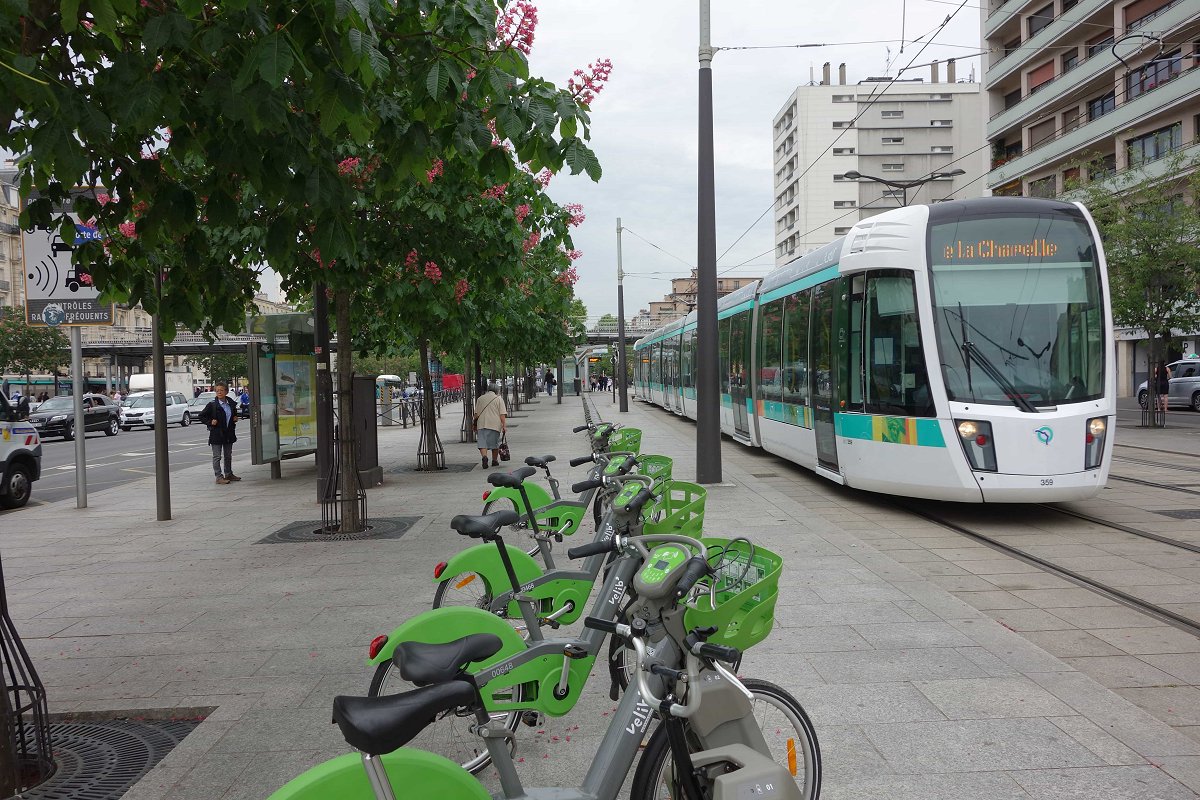
Tramline T3a/b, Paris, May 2018
Q: Mobility talking is focused on more efficiency only.
Right. Even the bicycle is the victim of that talking by pushing it in the role of mere alternative to the car. So, cycling must be faster, especially in commuter traffic, etc. But cycling involves much more than going (fast) from A to B and the bicycle much more than a car on two wheels. Cost-benefit analyses to justify bicycle infrastructure investments are like a kind of Trojan horses: More and tighter red asphalt. And the Dutch Cycle Union (Fietsersbond; Eds.) joins that way of thinking. Is this really beneficial for our cities? I don’t think so. Fortunately, people like Marco te Brömmelstroet (University of Amsterdam) say farewell to framing cycling within traditional traffic-based standards.
The government pays attention to infrastructure and solving bottlenecks only. But they have to think about their citizens. How do we get a prosperous, social, cohesive society? That results in completely different solutions. We must recognize that the key is with cities. There, we must create coherence. Technically responsible. Environmentally responsible. And socially responsible. Mobility solutions should serve this purpose.
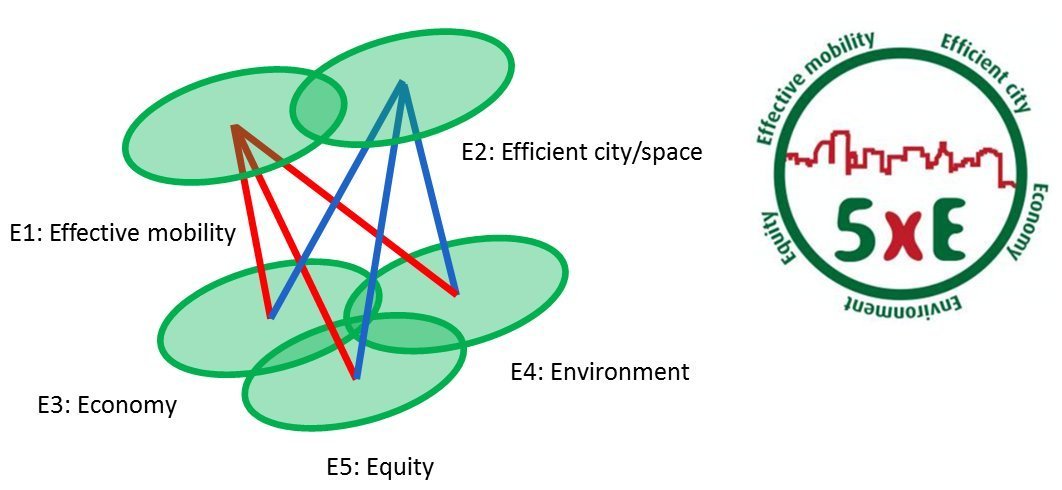
5E model by Rob van der Bijl and Niels van Oort, 2013-2018
Q: No bottleneck thinking. But what do we do with congestion?
I would ignore traffic jams. All investments must go from highway to public transport, as well as urban planning and design. Strengthen position of pedestrians. And improve integration of car infrastructure within cities, though.
I’m not at all favouring hard infrastructure as solution for everything. Where does all that mobility actually come from? Mobility as a right is absolutely bullshit. You must be able to participate in society. But society must be able to say: ‘Sir, madam, Your mobility behaviour doesn’t serve the interests of the vast majority of citizens. You can afford it and we can’t stop it. But we aren’t going to make it also tax attractive. ”
I’m a great advocate of smart pricing. To limit mobility, also in public transport. Sometimes new infrastructure is inevitable, but as a result of incorrect urban planning? No!
Q: Uber and MaaS, that is the future, is it not?
That ‘Uber revolution’, that is all drool. In San Francisco disadvantages became obvious: twice as much traffic in the central districts. Plus financial hollowing out of local public transport.
First you should consider things deep down mobility. Instead of regarding it as a hedonistic concept, that worries me: Mobility as an individual matter purely, while the public matter remains subordinate. However, mobility implies enormous social costs. You can’t solve that by just looking at mobility in a demand-driven way. The connection with space, difficult social aspects: You can only make these trade-offs on a social level. Hence, it’s madness to introduce a mobility concept that completely ignores this and only considers individual wishes and tries to facilitate that with technology like for instance the smartphone.
But I am not against MaaS-like solutions (MaaS: Mobility as a Service; Eds.). The smartphone can contribute a lot to improve transport. I use the travel app of the Dutch Railways frequently. It makes a difference to have up-to-date information. It doesn’t speed up your travel, but does offer you predictability and reliability.
Frequently dilapidated trams provide public transport in Moscow. But still these old cars are equipped with smart boxes. While walking to a stop travellers are getting updated information at their smartphone screen about the tram’s network position and arrival time. You are knowing whether you have to run or not. Moscow is really a hi-tech city, unbelievable. Like many Asian cities.
On the other hand, I would totally ban Uber. I think it’s a terrible business. We are talking about mobility and space which entail huge, multiple technological components. From smartphones to assembly tram vehicles. If you start using new technology, you should always ask yourself: What are the social implications?
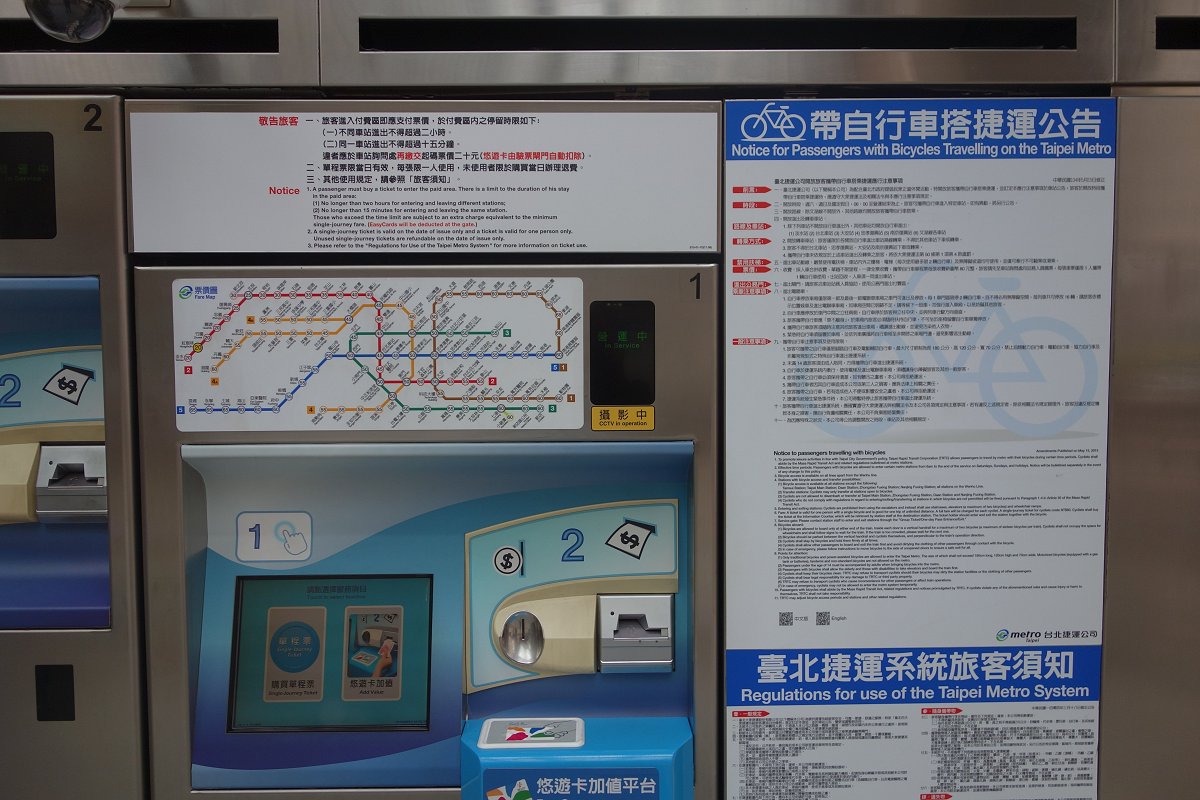
Smart equipment for public transport, Taipei (Taiwan), March 2015
Some companies offer traditional taxi services. They are now being put aside by Uber with its amazingly smart software. I think you should not let happen that. You have to preserve your social values. Uber doesn’t take notice of such a social context. In two respects: Not with regard to the spatial consequences of their concept, and not with regard to the societal consequences: Firstly for their employees and secondly for those who can’t pay Uber. It’s all about the public matter. I am an old social democrat, though enlightened conservatives will agree with me. Ban Uber.
Q: And how about an Uber clone? One that would only provide trip sharing? With mandatory at least 3 or 5 passengers. Instead of the bus, but next to tram and metro.
I can imagine – no, I even favour – to investigate this. But on one condition: That you try to improve the other systems equally.
Anyway, you have to look at your existing network first. How it is and how it works. You need a stronger, urban basic network. Fast connecting lines, also in the existing city. And above that there is the metropolitan, the regional network. That kind of conceptual thinking is lacking. Totally. Everything is ad hoc (Rob is referring here to Amsterdam mainly; Eds). Transport authorities should commit themselves to conceptual thinking. Only a few transport authorities in the Netherlands seem able to do that. For instance, the Metropolitan Region Rotterdam The Hague, as well as the Public Transport Office Groningen-Drenthe. Both think and act strategically. But not Amsterdam, nor the Dutch provinces.
It would be very helpful if we didn’t refer and view technology or cost savings. But instead address the question: For whom we are doing something? So, ’empathise’, as the Americans say.
Who is served by Uber? People who are already fine. For you and for me. I am involved in research into transport poverty. One of our conclusions: Within Dutch cities several neighbourhoods are home for citizens who can’t afford enough or even hardly any mobility. They don’t participate. Let alone at the Uber party.
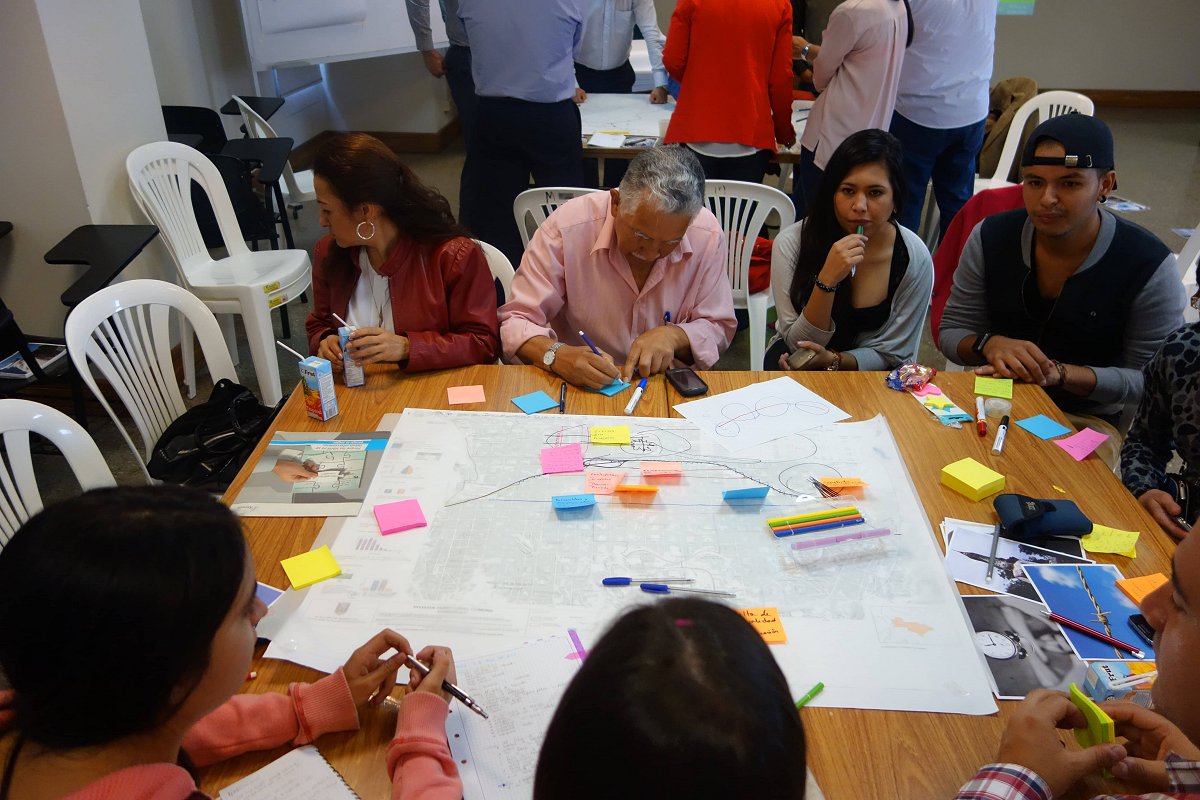
‘Empathise’: workshopping with stakeholders, Favas.net (Rob van der Bijl), in co-operation with office Urbanos, Manizales (Colombia), May 2015
Q: Is an Uber-like system with trip sharing different?
Trip sharing systems are nice. I don’t want to be an old peevish person. I really appreciate serious try-outs. Two caveats: Firstly, I think you should always start with the existing network and make it better. And secondly, often trip sharing systems aren’t adequately founded, that is, only on optimizing operating costs. So not on ’empathize’. Much line-based public transport are loss-making, though still many people are dependent on them. While trip sharing services could be less loss-making or even profitable, however, often too expensive for this people. If we replace the old line-based service by this new trip sharing service, we make an improvement for ‘our kind of people’, at the expense of the other users and their old system. That is what I oppose. New technology has enormous potential, but is now often used within a too small domain for a too small part of society.
Q: Take the countryside. The bus, won’t stay, or not?
No, I don’t think so either. I recognise two approaches to solve this problem. The first is individualization, by means of a personal travel budget or through citizens participation and volunteer work. I believe in that, but not simply by shifting responsibility to ordinary people. The second way is purely technocratic. Running self-driving buses and pods. Already, there are many pilots worldwide. But I’m not sure whether some of them will rescue public transport for rural areas.
These buses can no longer be operated responsibly. Sure, but I distrust the underlying economic models. There is more to life than optimized financial and commercial efficiency. We should not lose societal values such as inclusion, happiness and security. I understand how to cut its coat according to its cloth. But it never stops. Solely cost efficiency is a false justification of decisions. It’s only a precondition.
Q: Finally: Free advice for urban planners and traffic experts?
I don’t see how you can be involved in urban planning without understanding mobility. And vice versa, how you can think about traffic without taking into account comprehensively all consequences. So mutual collaboration is a no-brainer. Though, professional knowledge and understanding is conditional. Sometimes, when working on the intersection of city and traffic I’m flabbergasted about the absence of know-how.
I have two free recommendations. First, ensure yourself of in-depth knowledge of the situation. You have to be aware of your tasks and problems to be solved. However, at a given moment, you must taking distance in order to reflect on your task. After all, tasks and their conditions can be good or bad. Commissioner’s views can be wrong. Their problems inadequately expressed or simply unsolvable. Then it’s time to challenge a different approach. And reframing the question becomes mandatory.
And my second recommendation is about the difference between urban planners and traffic experts – and I don’t make friends with that. Traffic engineers are much more applied. They have a certain task and they have to limit themselves to that particular task. Certainly, they can be innovative, within that task. Contrary, urban planners must be able to think beyond their task, out of the situation. Therefore a hierarchy exists in the relation between urban planner and traffic expert. To put it boldly, I have my villa designed by an architect. Not by the installer.
But in the past 20 years, urban planning departments of cities in countries like the Netherlands have lost strength and knowledge. Today’s urban planners have become de facto process managers instead of designers. Particularly bad process managers. With their bullet list: ‘Did we do this? And that? Simply checking off. ‘Garden hose thinking’. And often the fear of going beyond existing frameworks. Whether or not a plan fits within a zoning plan isn’t that interesting. Does the plan have the required qualities? That’s what it’s about!
Apart from your official function, you do have your own morality. Even soldiers got that. Not only ‘befehl ist befehl’ (German for: ‘order is order’; Eds.). Urban planners and traffic experts must continue to ask these difficult moral questions to their clients. Is this the right task, what is the social side? Is Uber really what we want?
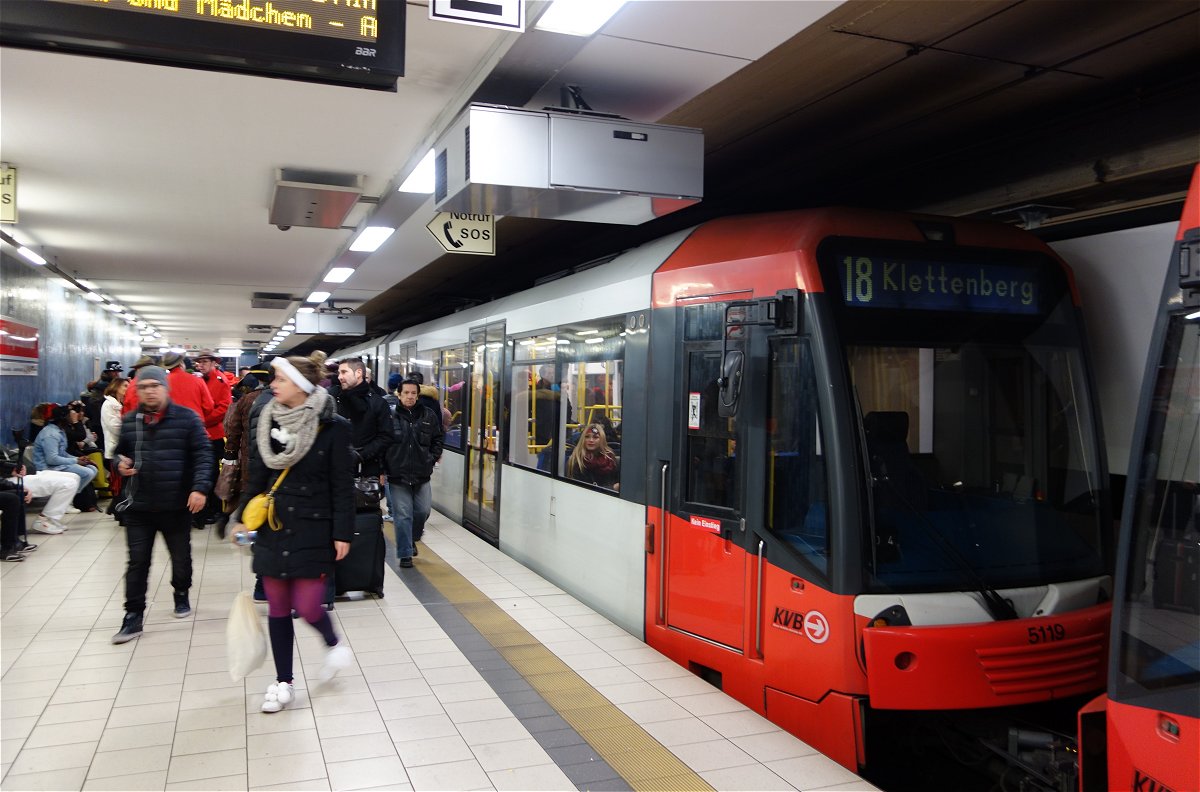
Cologne (Germany)
Backgrounds
Lightrail.nl and their book on Light Rail Transit systems (published by Elsevier, June 2018)
See also Favas.net on transport poverty
Credits
This interview by urban planner Danny Edwards has been published in Dutch at Emergent City
Translation and images by Favas.net
Nederlandse versie op Emergent City …
